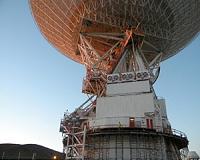 |
Paris, France (ESA) Jul 19, 2010 The first scientific results obtained with Herschel are appearing, this week, in a special issue of the journal Astronomy and Astrophysics. Based on data collected during the first few months of operations with this ESA observatory, the 152 new publications tackle a multitude of different astrophysical subjects, ranging from nearby Solar System bodies through newly-forming stars in our Galaxy, all the way to very distant galaxies. These first results provide a clear indication of the profound contribution that this mission will make to astronomy. It is harvest time for Herschel, ESA's infrared observatory launched just over a year ago, on 14 May 2009. A first batch of papers - 152 in all - are published in this week's special issue of Astronomy and Astrophysics. These are based on data collected during the first few months of scientific observations in late 2009 and early 2010. Herschel observes the sky in the far-infrared and submillimetre domain of the electromagnetic spectrum, focussing on the emission from cold dust and gas in the interstellar medium (ISM) from two very different perspectives: nearby, within our own Galaxy where specific regions such as those where stars are still in the process of being formed can be studied in great detail; and far away, in very distant galaxies, whose light has been travelling towards us for thousands of millions of years, in some cases for over 10 thousand million years. "These first, outstanding results cover an extremely rich variety of astronomical topics on all interesting cosmic scales: from objects in our own neighbourhood, the Solar System, to star-forming regions throughout our Milky Way galaxy and farther away, and even to distant galaxies and the very earliest phases of star formation in the Universe," explains Goran Pilbratt, Herschel Project Scientist. The images and spectra collected by Herschel in this early operational phase are already shedding new light on a number of open questions in astronomy. Peering through the dust with unprecedented sensitivity, Herschel is disclosing previously undetected populations of young stars and protostars in regions of intense stellar formation. These observations are a key contribution to understanding in great detail the processes that lead to the birth of stars, especially of the most massive ones. Great emphasis is also placed on the study of the interstellar medium, the mixture of gas and dust in the Milky Way from which stars are born and into which dying stars deposit chemically enriched material. By probing the chemical composition of the ISM to very high precision, Herschel provides astronomers with a brand new vista on the life cycle of matter in our own Galaxy. From a cosmological perspective, Herschel is surveying the sky to a very great depth, revealing infrared emission from myriad faint and distant galaxies and demonstrating its capability to be a unique tool to probe the evolution of star-forming galaxies over several thousand million years of cosmic history. The revolutionising impact that Herschel will have on these, and many more topics is clearly evident from the first papers, submitted by the end of March 2010 and collected in this week's special issue of Astronomy and Astrophysics. These first scientific results anticipate a wealth of remarkable results to be achieved during the coming years from this exceptional observatory. "Albeit already impressive per se, this sample of publications is only the proverbial tip of the iceberg, and we eagerly await the multitude of results yet to come," says Pilbratt. "Thanks to Herschel, we are literally seeing what nobody has seen before," he adds.
Share This Article With Planet Earth
Related Links ESA Herschel Space Telescope News and Technology at Skynightly.com
 Giant Antenna Propped Up And Ready For Joint Replacement
Giant Antenna Propped Up And Ready For Joint ReplacementGoldstone CA (SPX) Jul 16, 2010 Workers at NASA's Deep Space Network complex in Goldstone, Calif., have been making precise, laser-assisted measurements to ensure a flat surface for pouring new grout as part of a major renovation on the 70-meter-wide (230-foot-wide) "Mars antenna." While officially dubbed Deep Space Station 14, the antenna picked up the Mars name from its first task: tracking NASA's Mariner 4 spacecraft, ... read more |
|
| The content herein, unless otherwise known to be public domain, are Copyright 1995-2010 - SpaceDaily. AFP and UPI Wire Stories are copyright Agence France-Presse and United Press International. ESA Portal Reports are copyright European Space Agency. All NASA sourced material is public domain. Additional copyrights may apply in whole or part to other bona fide parties. Advertising does not imply endorsement,agreement or approval of any opinions, statements or information provided by SpaceDaily on any Web page published or hosted by SpaceDaily. Privacy Statement |